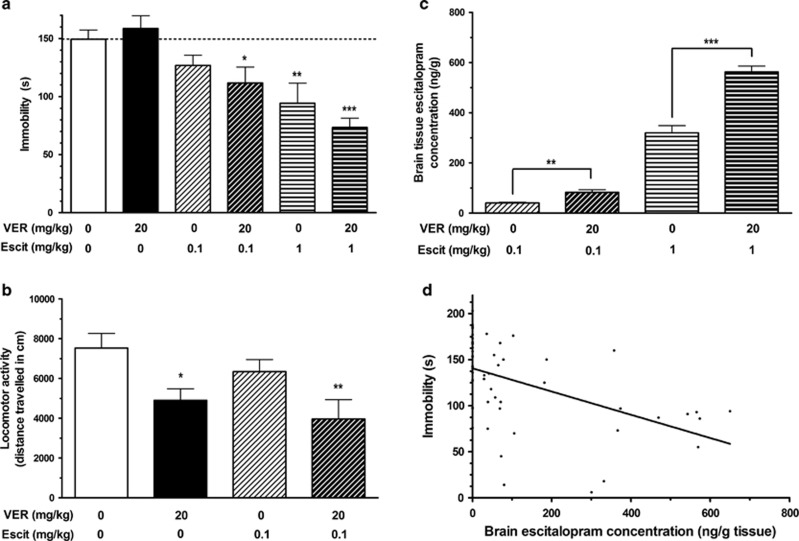Figure 3.
In vivo pharmacodynamic studies. (a) Tail suspension test. Treatment with escitalopram reduced the time spent immobile in the tail suspension test (TST) in a dose-dependent manner. Treatment with verapamil without escitalopram had no impact on immobility. However, pre-treatment with verapamil augmented the antidepressant-like effect of escitalopram in the TST, further reducing the time spent immobile at both doses of escitalopram (mean±SEM; n=8–17 per group). (b) Locomotor activity. Treatment with verapamil, escitalopram, or both did not increase locomotor activity, indicating that the reductions in immobility observed in the TST were due to antidepressant-like effects. In fact, treatment with verapamil reduced locomotor activity, with or without escitalopram treatment (mean±SEM; n=6–7 per group). (c) Brain tissue escitalopram concentrations. Pre-treatment with the P-gp inhibitor verapamil before administration of escitalopram significantly increased brain concentrations of escitalopram in mice used in the TST at both doses of escitalopram treatment (mean±SEM; n=6–12 per group). (d) Correlation between brain escitalopram concentration and immobility in the TST. There was a moderately strong negative correlation between escitalopram concentration in brain tissue and immobility in the TST (rs=−0.594, n=56, p<0.001). *p<0.05; **p<0.01; ***p<0.001 relative to saline–saline control group (or between two groups, where indicated in (c)).

